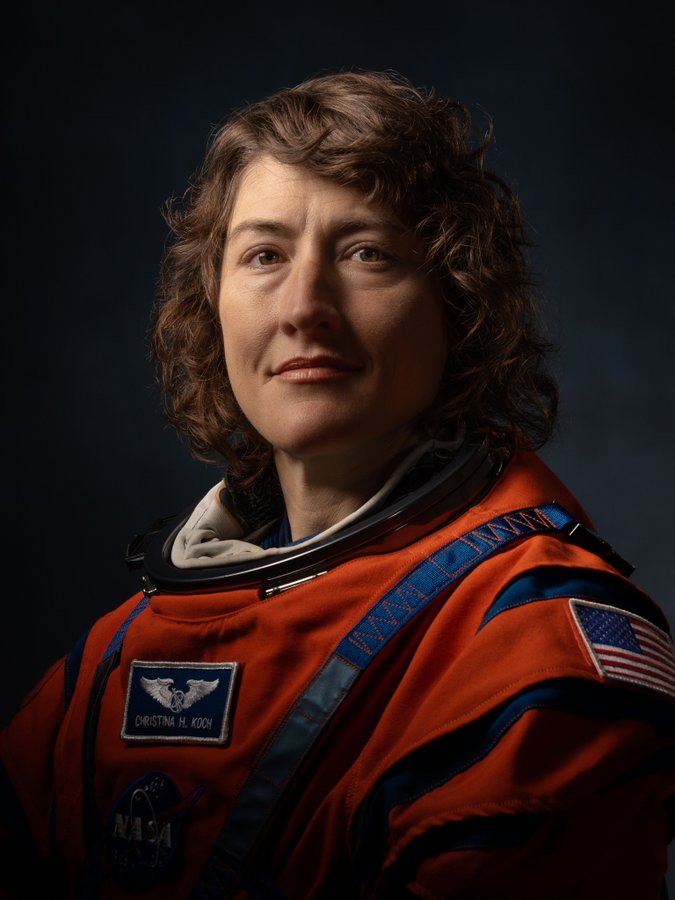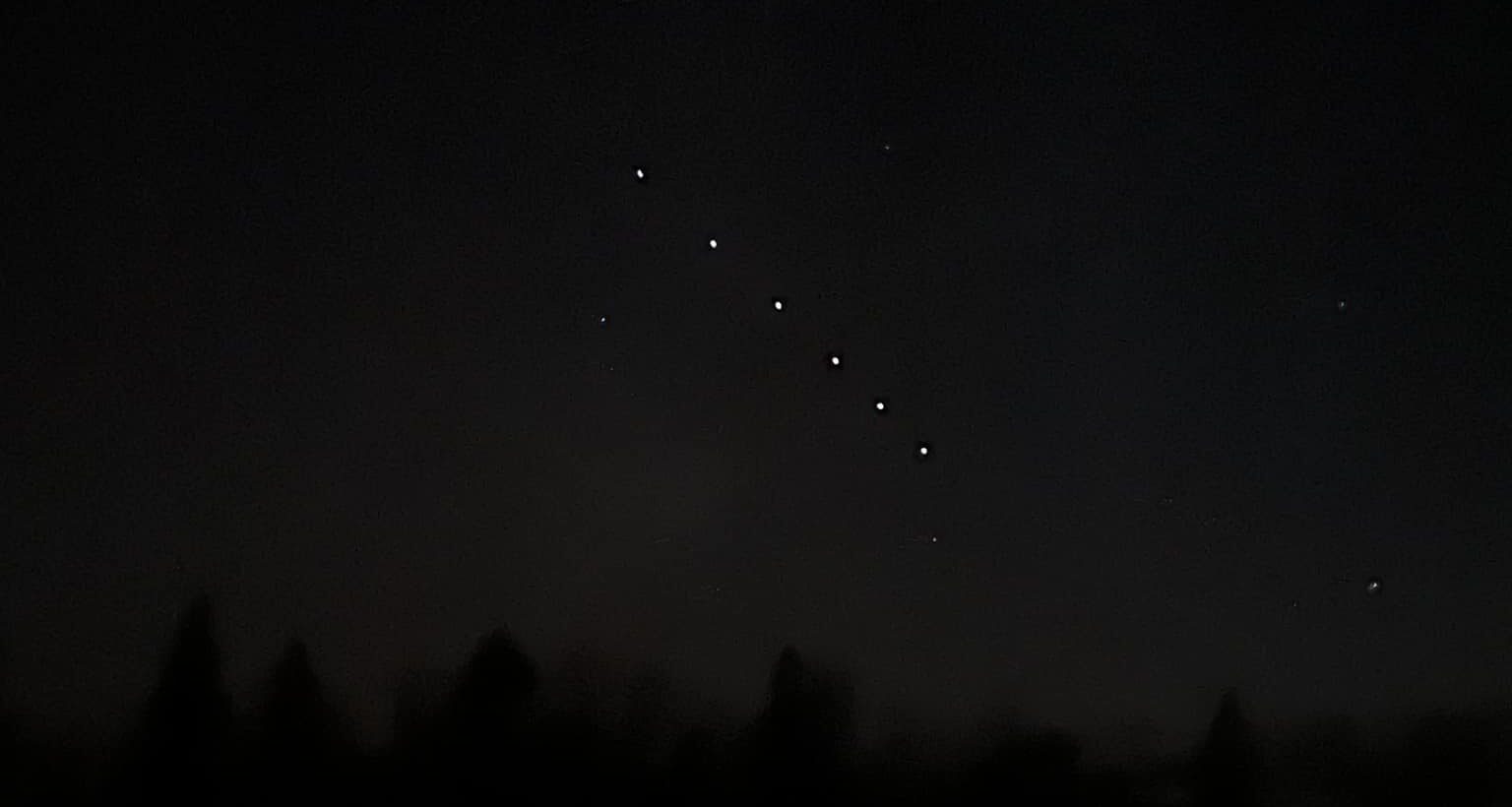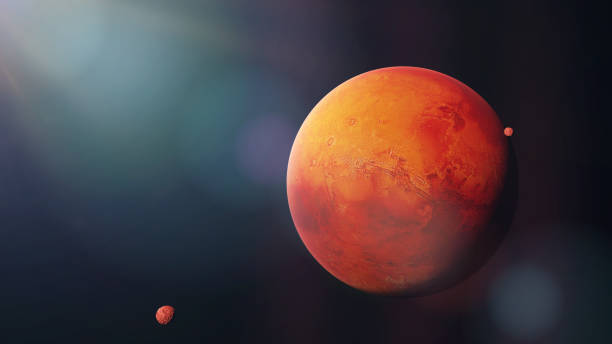
Astronaut Christina Hammock Koch will become the first woman to go around the Moon ever since humanity began exploring the lunar world. US space agency Nasa announced that Koch will be the mission specialist when four humans board the Orion spacecraft for a trip around the Moon.
So far, only male astronauts have been to lunar orbit and on the surface. The new mission marks the first arrival of a woman astronaut in the realm of the Moon. Nasa announced that Koch will be joined by astronauts Jeremy Hansen, Victor Glover and Reid Wiseman on the 10-day-long mission around the moon.

Upon being unveiled as part of the mission crew, Koch conveyed her profound sense of privilege and gratification, remarking that the expedition is a momentous undertaking in its own right. The crew will soar to towering altitudes, navigating the most powerful rocket on Earth while testing all the intricate systems required for the mission’s success. Thereafter, they will proceed towards the Moon, bearing the collective ardour, aspirations, and aspirations of humankind with them.
The announcement marks the formal commencement of preparations for the momentous Artemis-II mission, which represents a significant step towards human space exploration, edging closer to the feat of landing on the Moon since the epochal Apollo missions. It has been over five decades since humans set foot on the Moon, with the last instance of this momentous achievement occurring in 1972 when Eugene Cernan, the Apollo 17 commander, indelibly inscribed his footprints on the Moon’s lunar landscape.
They’re going to the Moon! Introducing the #Artemis II astronauts:
Reid Wiseman (@astro_reid), Commander
Victor Glover (@AstroVicGlover), Pilot
Christina Koch (@Astro_Christina), Mission specialist
Jeremy Hanson (@Astro_Jeremy), Mission specialisthttps://t.co/Hy1110MOEi pic.twitter.com/SeETL5iURu— NASA’s Johnson Space Center (@NASA_Johnson) April 3, 2023
About Christina Hammock Koch
Christina Hammock Koch is a NASA astronaut who joined the organization in 2013. During her tenure, she served as a flight engineer for Expeditions 59, 60, and 61 on the International Space Station (ISS). Koch hails from Grand Rapids, Michigan, and obtained Bachelor of Science degrees in Electrical Engineering and Physics, as well as a Master of Science degree in Electrical Engineering from North Carolina State University in Raleigh, North Carolina.
Koch’s diverse career encompasses space science instrument development as well as remote scientific field engineering. She began her career as an Electrical Engineer at NASA’s Goddard Space Flight Center (GSFC), where she contributed to scientific instruments on multiple NASA space science missions.
In 2019, Koch had her initial space launch from the Baikonur Cosmodrome on the Soyuz MS-12 spacecraft. For Expeditions 59, 60 and 61, Koch served as a Flight Engineer on the ISS, where she and her crewmates participated in hundreds of experiments covering a broad range of areas such as biology, Earth science, human research, physical science, and technology development, as revealed by Nasa.
During her time on the ISS, Koch carried out six spacewalks, including three all-women spacewalks, amounting to a total of 42 hours and 15 minutes. She has already spent a total of 328 days in space.

Artemis II is part of an Apollo successor program that aims to return astronauts to the Moon’s surface and establish a sustainable outpost to pave the way for human exploration of Mars. This crewed mission, although not the first lunar landing, will be the first of its kind in the Artemis program.
The 10-day mission will involve a journey of 2.3 million kilometers around the Moon and back. Its primary objective is to demonstrate that all life-support systems and other critical components of the Orion spacecraft will function properly with astronauts onboard in deep space.
About Artemis II Moon Mission
NASA made an announcement on Monday indicating that four astronauts, Christina Koch, Victor Glover, Reid Wiseman, and Jeremy Hansen, will venture to the Moon in over 50 years. This will be the first time humans will be returning to the Moon since the end of the Apollo missions. The Artemis-II mission is set to launch in 2024 from the United States, and the four astronauts will orbit the Moon.

Several months after the triumphant Artemis-I mission last year, NASA announced the four astronauts for the Artemis-II mission. The successful Artemis-I mission demonstrated the agility of the Space Launch System by safely sending humans towards Lunar Orbit on the Orion capsule and bringing them back with a precise splashdown.
NASA’s announcement formally signals the commencement of the groundwork for the 10-day-long Artemis-II mission, which will bring humanity one step closer to landing on the Moon again since the Apollo missions. The final time humans graced the Moon’s surface was in 1972, when Apollo 17 commander Eugene Cernan left his footprints on Earth’s natural satellite.
NASA’s Artemis II mission, set to launch in 2024, will be the first crewed flight of an Apollo successor program, aimed at returning astronauts to the moon’s surface and establishing a sustainable outpost for future human exploration of Mars. The mission will not, however, be the first lunar landing of the program.
The four astronauts selected for the mission were chosen from a pool of 18 individuals who are part of the diverse Artemis corps, with plans in place for the first woman and first person of color to land on the moon in the near future.
The objective of Artemis II is to conduct a 10-day, 2.3-million-kilometer journey around the moon and back to demonstrate that Orion’s life-support and other systems will function as designed in deep space with astronauts on board.
Artemis II will travel beyond the far side of the moon, venturing some 10,300 km, marking the closest that humans have come to Earth’s natural satellite since the Apollo 17 mission in 1972. Gene Cernan and Harrison Schmitt were the last of 12 NASA astronauts to walk on the moon during six Apollo missions starting in 1969.
If Artemis-II is successful, the program’s first lunar landing of astronauts, including the first woman, is planned for Artemis III a few years later. NASA intends to continue with additional crewed missions about once a year after that.
More About Artemis II Mission Is Available Here https://www.nasa.gov/artemis-ii
For breaking news and live news updates, like us on Facebook fb.com/thevoiceofsikkim or follow us on Twitter twitter.com/thevoicesikkim and Instagram instagram.com/thevoiceofsikkim. Visit www.voiceofsikkim.com.






